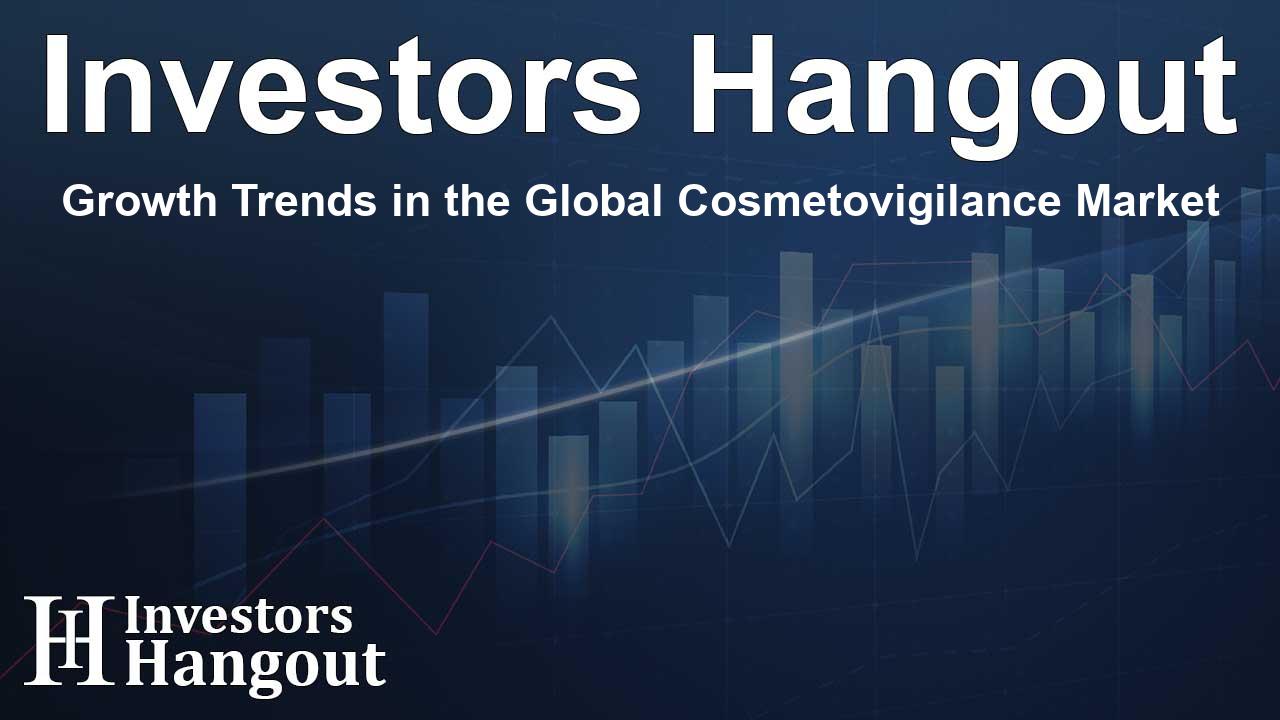Growth Trends in the Global Cosmetovigilance Market

Understanding the Cosmetovigilance Market
The cosmetovigilance market is witnessing significant growth, expected to reach over USD 18.35 billion by the year 2034, with a remarkable increase from USD 12.26 billion in 2025. This growth is attributed to a combination of factors, including the technological advances in reporting adverse events, stringent government regulations, and the growing awareness among consumers regarding product safety.
What Drives the Growth?
The increasing ease of reporting adverse events is one of the primary catalysts propelling the growth of this market. Technological advancements have revolutionized how cosmetovigilance operates, allowing for rapid collection and analysis of data regarding the safety of cosmetic products. Moreover, effective government regulations, particularly in developed regions, are fostering a safer marketplace.
Market Overview
Europe dominated the market share in 2024, accounting for approximately 37.8% of the global market. The North American region is also anticipated to see notable expansion in the coming years, driven by a combination of regulatory changes and rising consumer expectations.
Key Market Insights
In 2024, the post-marketing services segment held a significant market share, representing about 64%. Furthermore, skincare products emerged as the leading category, contributing 33% of the overall market share. These insights highlight the growing demand for comprehensive safety monitoring systems related to cosmetic products.
Growth Forecast
Looking ahead, various forecasts indicate a CAGR of 4.59% from 2025 to 2034. The anticipated market size for 2025 is USD 12.26 billion, with projections rising steadily each year leading up to the remarkable USD 18.35 billion forecasted by 2034.
What is Cosmetovigilance?
Cosmetovigilance refers to the systematic monitoring of cosmetic products to ensure their safety in relation to human health. This growing field is increasingly recognized for its role in public health, allowing stakeholders to monitor and report any potential adverse effects associated with cosmetic products.
Government Initiatives
Regulatory frameworks play a vital role in shaping the landscape of the cosmetovigilance market. In the United States, the Modernization of Cosmetics Regulation Act of 2022 significantly expanded the FDA's authority over cosmetic safety, mandating the reporting of serious adverse events. Meanwhile, in the European Union, the Cosmetics Regulation (EC) No 1223/2009 provides a robust legal framework aimed at protecting consumer health.
Emerging Trends in the Market
Several key trends are emerging in the cosmetovigilance market. Firstly, increased regulatory scrutiny and harmonization are evident as governments implement stricter guidelines for product safety. Additionally, the use of artificial intelligence and machine learning is on the rise, enhancing the speed and efficiency of data reporting and analysis.
Consumer Awareness
In today's digital age, consumers are more informed than ever. This shift in perspective has led to heightened expectations for transparency and safety from cosmetic brands. As such, more consumers are actively reporting adverse effects using online platforms, increasing accountability across the industry.
Digital Transformation and Market Opportunities
Digital transformation is not only shaping how cosmetics are marketed and delivered but is also presenting new opportunities within the cosmetovigilance market. The integration of tools like AI and big data aids in monitoring adverse effects and maintaining product safety.
Challenges in Cosmetovigilance
Despite the positive growth trajectory, there are challenges to address. Concerns regarding data privacy and regulatory gaps continue to pose risks to the industry. Addressing these issues will be essential as the market evolves.
Conclusion
With a projected rise to USD 18.35 billion by 2034, the cosmetovigilance market is set for significant growth, driven by technological innovation and enhanced regulatory measures. Stakeholders must remain vigilant and proactive in navigating challenges to leverage the opportunities that this dynamic market presents.
Frequently Asked Questions
1. What is the primary function of cosmetovigilance?
Cosmetovigilance focuses on the systematic monitoring of cosmetic products to ensure their safety and effectiveness, detecting and preventing adverse effects.
2. How is the growth of the market measured?
The growth is evaluated through various metrics, including market size estimates, expected growth rates (CAGR), and the contribution of different segments.
3. Why is Europe leading in the cosmetovigilance market?
Due to stringent regulations, high consumer demand, and well-established monitoring systems, Europe has become the leading region in the cosmetovigilance market.
4. What role do regulations play in the cosmetovigilance market?
Regulations dictate the standards for product safety monitoring, influencing how companies approach product development and compliance.
5. What are the expected challenges for the future of the market?
Key challenges include addressing data privacy concerns and ensuring compliance with varying regulatory standards in different markets.
About The Author
Contact Caleb Price privately here. Or send an email with ATTN: Caleb Price as the subject to contact@investorshangout.com.
About Investors Hangout
Investors Hangout is a leading online stock forum for financial discussion and learning, offering a wide range of free tools and resources. It draws in traders of all levels, who exchange market knowledge, investigate trading tactics, and keep an eye on industry developments in real time. Featuring financial articles, stock message boards, quotes, charts, company profiles, and live news updates. Through cooperative learning and a wealth of informational resources, it helps users from novices creating their first portfolios to experts honing their techniques. Join Investors Hangout today: https://investorshangout.com/
The content of this article is based on factual, publicly available information and does not represent legal, financial, or investment advice. Investors Hangout does not offer financial advice, and the author is not a licensed financial advisor. Consult a qualified advisor before making any financial or investment decisions based on this article. This article should not be considered advice to purchase, sell, or hold any securities or other investments. If any of the material provided here is inaccurate, please contact us for corrections.
